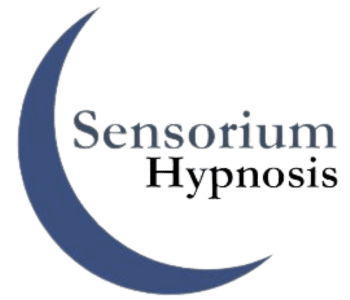Pain is more than just a physical sensation; it often serves as a profound message from our body and mind. Each ache and twinge can point to underlying emotional and spiritual conflicts, revealing a complex tapestry of our inner experiences. By understanding the deeper meanings behind our pain, we can embark on a journey of healing that transcends traditional approaches. This article explores how to decode the messages behind physical discomfort, connect emotional struggles to bodily manifestations, and implement holistic strategies—like hypnotherapy and spiritual coaching—that promote lasting relief and inner peace.
1. Recognize Pain as a Messenger
Physical pain often mirrors emotional or spiritual blocks. For instance, lower back pain may signify financial stress, while neck pain reflects rigidity and resistance to change. Understanding these connections can empower you to address the deeper issues at play.
Action Step: Journal and Reflect
Write about your pain, focusing on the emotions that arise. Ask yourself, What underlying feelings are tied to this pain? This reflection can help you uncover pain’s hidden messages.
2. Connect Emotions to Physical Manifestation
Many common types of pain are linked to specific emotional struggles. Here are a few examples:
- Lower Back Pain: Often associated with fear and financial insecurity.
Action Steps:
- Reflect on Your Support System: Write about feelings of support in your life. Are there financial concerns you need to address?
- Set Financial Goals: Consider setting small, achievable financial goals to alleviate anxiety.
- Neck Pain: Indicates rigidity and a reluctance to adapt to new perspectives.
Action Steps:
- Explore Your Emotions: Reflect on feelings tied to your neck pain. Are there situations where you feel unheard or constrained? Journaling can help clarify these emotions.
- Practice Mindful Communication: Verbally express your feelings, even if just to yourself. This can help you articulate emotions and build confidence.
- Shoulder Pain: Symbolizes emotional burden and responsibility.
Action Steps:
- Identify Areas of Overwhelm: Journal about your current commitments and recognize where you might need to set boundaries.
- Practice Letting Go: Engage in a ritual to release burdens, such as writing down worries and burning the paper as a symbol of release.
- Hip Pain: Reflects fears around change and moving forward in life.
Action Steps:
- Embrace Change: Consider what changes you may be resisting. Write about these transitions and visualize yourself moving forward.
- Mindful Movement: Incorporate hip-opening exercises or yoga to physically and emotionally release tension.
- Headaches and Migraines: Often correlate with overwhelm and anxiety.
Action Steps:
- Identify Stress Triggers: Keep a journal to track headache patterns and recognize situations or thoughts that exacerbate stress.
- Practice Grounding Techniques: Engage in mindfulness exercises, focusing on your breath and the present moment to alleviate anxiety.
- Foot and Ankle Pain: Represents feelings of being stuck or unsupported.
Action Steps:
- Assess Life Direction: Reflect on areas in your life where you feel stagnant. Write about the changes you wish to make.
- Ground Yourself: Engage in grounding exercises, such as walking barefoot on grass or soil, to connect with your body and the earth.
Action Step: Identify Stress Triggers
Keep a journal to track pain patterns and triggers. Once identified, address these triggers directly through lifestyle changes or professional support.
3. Practice Guided Meditation to Release Emotional Blocks
Meditation allows for deep exploration of pain’s emotional roots. Focusing on letting go or healing trauma can be particularly effective.
Action Step: Choose a Release Meditation
Find a quiet space and engage in a guided meditation on releasing emotional blockages. Focus on the pain, using breath to soften discomfort.
4. Embrace Physical Release Through Movement
Physical movement can facilitate emotional release. Practices like yoga and tai chi help unbind tension stored in the body.
Action Step: Try a Restorative Yoga Session
Incorporate gentle yoga poses into your routine, focusing on areas storing emotional pain. Breathing deeply can promote both physical and emotional release.
5. Speak to Your Pain with Compassion
Instead of suppressing pain, acknowledge it as part of your experience. This shift in perspective transforms pain from an antagonist into a teacher.
Action Step: Have a Conversation
Talk directly to your pain, asking it why it’s present and what it’s trying to teach you. Listen for insights that may arise.
6. Seek External Support
Tackling pain’s emotional and spiritual roots sometimes requires guidance. Healers, therapists, or spiritual coaches trained in mind-body connections can offer valuable insights.
Action Step: Find a Holistic Therapist
Research a therapist who specializes in mind-body connections or energy healing. Their support can enhance your healing journey.
7. Hypnotherapy and Spiritual Coaching for Deeper Healing
Hypnotherapy helps access the subconscious mind, uncovering emotional roots of pain and reprogramming limiting beliefs. Spiritual Coaching focuses on emotional burdens and energy blockages, guiding you to live more authentically.
- Hypnotherapy: A trained hypnotherapist can guide you to revisit and process buried emotions, releasing the hold they have on your physical body.
Action Step: Try Self-Hypnosis
Practice self-hypnosis by finding a quiet space, relaxing deeply, and repeating affirmations like, “I release pain and welcome peace.”
- Spiritual Coaching: This practice encourages compassion and forgiveness, essential for emotional pain. Setting small goals related to your well-being can cultivate resilience.
Action Step: Engage in Self-Compassion Rituals
Develop a daily self-compassion practice. Place your hand on the painful area, sending loving thoughts and affirmations to facilitate healing.
Wrapping Up: Embrace Pain as a Path to Growth
Pain is both a challenge and an invitation to heal from the inside out. By exploring its spiritual and emotional symbolism, we gain insights into our inner lives and find ways to move beyond suffering. Embracing pain with curiosity allows us to learn, grow, and transform our relationship with ourselves.
Healing from pain is a journey, and with patience, compassion, and the right support, it’s a journey toward a brighter, healthier future. Each step taken in understanding pain brings us closer to wholeness, revealing the wisdom it holds.
Take the Next Step in Your Healing Journey
If you’re ready to explore the emotional and spiritual dimensions of your pain, I invite you to book a free consultation with me. With a background in hypnotherapy and spiritual coaching, I specialize in helping individuals like you uncover the roots of their discomfort and develop personalized strategies for healing. Visit Sensorium Hypnosis to learn more and schedule your consultation today. Let’s work together to transform your pain into a pathway for growth and well-being.
For deeper insights and resources, check out these other topics:
#PainManagement #ChronicPain #PainRelief #PainAwareness #PainRecovery #Hypnotherapy #SpiritualCoaching #HypnosisForHealing #WellnessCoaching #EnergyHealing #EmotionalHealing #SpiritualGrowth #MindBodyConnection #HolisticHealing #EmotionalWellness #SelfCare #WellnessJourney #Mindfulness #Meditation #SelfCompassion #PainAndSpirituality #HealingThroughHypnosis #MindfulnessAndPain #SpiritualPainManagement #TransformPainToPower
Master’s level Rehabilitation Counselor, certified Hypnotist, Energy Worker, Humorist, and Recovering Chaos Addict.
I value intuition over formal protocol and textbook explanations; clients over clinicians in identifying the most effective formula for recovery; joy over suffering – as most of the pressure we place on ourselves is simply unnecessary, misguided, and masochistic.

